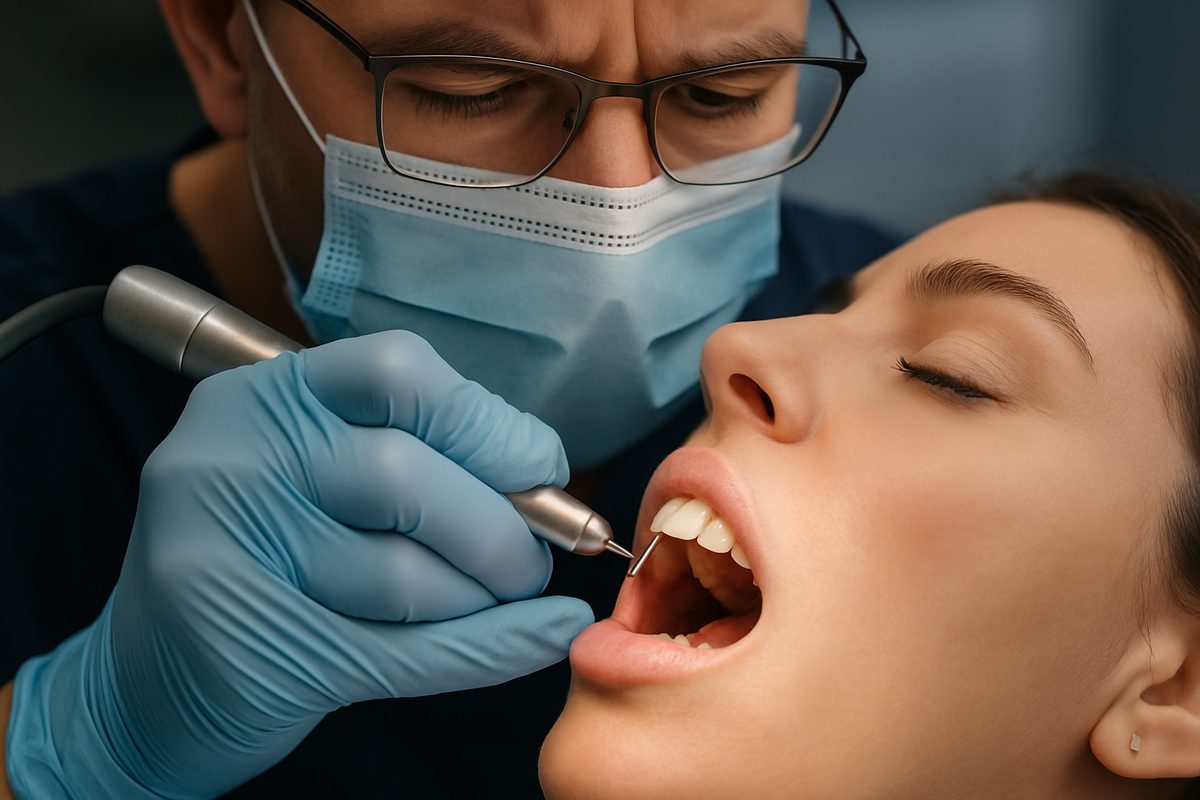Getting porcelain veneers starts with careful veneer preparation. This page explains what veneer preparation is, how your dentist plans and performs it, what to expect during the appointment, and how to care for your teeth afterward. If you’re considering veneers, you’ll learn practical next steps so you feel prepared and confident about the process of veneer preparation in St. Louis, MO.
What Is Veneer Preparation?
Veneer preparation is the process your dentist uses to shape teeth and create space so porcelain veneers fit correctly. It’s a conservative step designed to remove a small amount of enamel, let the veneer sit flush with your other teeth, and create a strong bond. Proper preparation improves appearance, fit, and long-term durability.
Initial Consultation & Treatment Planning
Smile assessment and goals
At the first visit your dentist reviews your goals, looks at tooth shape and color, checks your bite, and discusses what you want to change. This conversation guides how much enamel to remove, which teeth will get veneers, and whether other treatments are needed first.
Digital imaging and mockups
Most offices use intraoral photos, digital smile design, and facial scanning to create a mockup of your new smile. These tools let you preview results and let the dentist plan precise veneer preparation in St. Louis, MO so restorations match your face and smile symmetry.
Oral Health Checks Before Preparation
Good oral health is essential before veneer preparation. Your dentist will check for cavities, gum disease, and bite problems. Any active issues are treated first so veneers are placed on a healthy foundation.
When additional imaging is needed
X-rays or 3D scans (CBCT) may be recommended when the dentist needs a deeper look at root health, bone levels, or to plan more complex cases. These scans help guide safe, accurate enamel reduction and placement.
Step‑by‑Step: What Happens During Veneer Preparation
Tooth shaping and minimal enamel removal
Preparation usually means removing a thin layer of enamel—often about 0.3–0.7 mm—so the veneer sits naturally. The goal is minimal invasive shaping to preserve tooth structure while ensuring a strong bond and correct contours.
Impressions or digital scans
After shaping, your dentist takes impressions or a digital intraoral scan. Digital scans are faster and more comfortable for many patients and are used to design the final porcelain veneers in the lab or in-office milling system.
Temporary veneers and timeline
Temporary veneers are placed to protect prepared teeth and let you test the look and feel while the lab makes your final veneers. Lab fabrication typically takes 1–3 weeks. Most preparation appointments last 60–120 minutes depending on the number of veneers.
Pain control and comfort
Local anesthesia keeps you comfortable during preparation. If you have dental anxiety, sedation options like nitrous oxide, oral meds, or IV sedation are available to make veneer preparation in St. Louis, MO stress-free.
Recovery & Care After Veneer Preparation
Expect mild sensitivity for a few days, especially to cold. Care for temporaries by avoiding sticky or hard foods, brushing gently, and using non-abrasive toothpaste. Call your dentist if a temporary comes off, you have persistent pain, swelling, or bite changes.
- Avoid crunchy or sticky foods for 1–2 weeks.
- Brush gently and floss carefully around temporaries.
- Use a sensitivity toothpaste if needed.
Common Questions About Veneer Preparation
Is enamel permanently removed? Yes, a small amount of enamel is removed. That’s why veneers are a long-term restoration that requires professional care.
Will it hurt? Most patients feel little or no pain during preparation because of local anesthesia and sedation options.
How long until final veneers? Usually 1–3 weeks after preparation for lab-made porcelain veneers. Same-day options exist in offices with in-house milling.
How long do veneers last? With good care, porcelain veneers often last 10–15 years or longer. Regular dental visits and avoiding biting hard objects extend their life.
Why Experience and Technology Matter for Veneer Preparation
An experienced dentist plus modern tools (digital scanning, facial scanning, and precise preparation instruments) lowers risk and improves fit and aesthetics. Technology helps plan exactly how much enamel to remove and predicts final tooth position and appearance before work begins.
About South County Complete Dental Care & Dr. James Fetsch
South County Complete Dental Care in St. Louis, MO, is led by Dr. James Fetsch, DMD, FAGD. Dr. Fetsch brings advanced training and years of experience to cosmetic care. The practice uses digital x-rays, intraoral cameras, facial scanning (RAYFace), and digital smile design to plan precise veneer preparation in St. Louis, MO. Sedation options, private suites, and a patient-first approach help anxious patients stay comfortable during treatment.
Next Steps: Scheduling Your Veneer Preparation Consultation
Ready to learn more? Call to book a veneer consultation and bring photos of smiles you like, a list of goals, and any medical/dental history. Ask about mockups, digital scans, sedation choices, and expected timeline for your veneers. A clear plan will make your veneer preparation in St. Louis, MO efficient and predictable.

